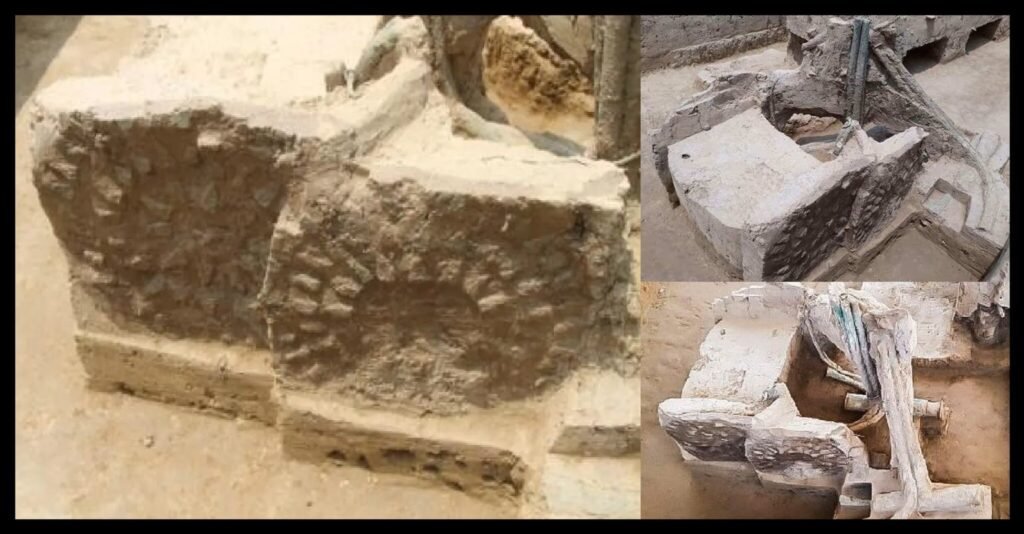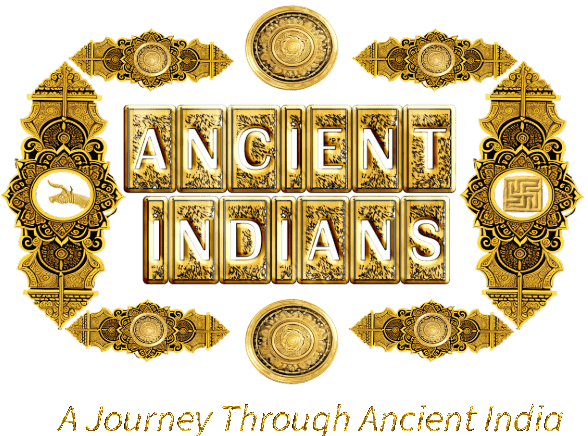
The discovery of royal burials containing copper-clad coffins, anthropomorphic figures, and three full-sized chariots from the archaeological site at Sinauli in 2018 positioned India on par with other ancient civilizations like Mesopotamia and Greece, where chariots were a critical part of warfare. The Sinauli chariots featured unique sun-ray motifs, indicating advanced craftsmanship and a developed warrior culture. While no weapons were discovered in the Indus Civilization, these findings at Sinauli were significant because they provided evidence of weapons of warfare in ancient India.
Recent carbon dating confirms that the Sinauli archaeological site, featuring chariots and royal burials, dates back approximately 4000 years(2000 BC), offering valuable insights into ancient Indian culture and craftsmanship.
Background
The Sinauli archaeological site is located in the Ganga-Yamuna doab region in India and dates back to the Chalcolithic period (Copper Age). It is the first site in India where chariots have been discovered alongside royal burials and warfare tools like swords, shields, helmets, and more. This discovery is highly significant because it sheds light on the lifestyle, rituals, and craftsmanship of the ancient people who lived there.
Cultural Significance
The excavation unearthed burials that were part of the last rituals performed by the people of Sinauli. Along with these burials, a variety of cultural artifacts were found, giving insight into how advanced and sophisticated their daily lives were. These artifacts suggest that the people had well-developed skills in woodworking and craftsmanship using materials like copper.
Based on archaeological evidence, Sinauli is believed to be linked to the OCP (Ochre-Colored Pottery)/Copper Hoard culture, which existed in northern India. To confirm the dating of this site, four samples were collected from the royal burials and analyzed using radiocarbon dating (a method to determine the age of ancient materials).
Dating Results
The dates obtained from the samples show that the site was active approximately between 5000–3500 years BP (Before Present). This means the time range is roughly 3077–1466 BC. The dates from the samples, especially carbonized seeds found in the burial site, support this estimation. These seeds were examined using AMS (Accelerator Mass Spectrometry), a method for more precise radiocarbon dating.
The dating results from different materials, including seeds and coffin wood, aligned well, confirming the time frame and cultural practices of the Sinauli people. However, one of the samples showed a slightly older date, likely because of sediment movement during burial activities.
Crop Remains and Rituals
One unique discovery at Sinauli was the carbonized remains of crops such as rice (Hindi: चावल , Chāval) and urad pulse (Hindi: उड़द दाल, Urad Dāl). These were found in burial pots, suggesting that food offerings may have been part of the funeral rituals at that time. Ancient Indian texts also describe the use of food grains in rituals.
Along with the crops, weeds were also found, possibly mixed in with the grains after the burial.
Wood and Diet Analysis
Further analysis was done on the chariot and coffin found at the site. The researchers used a technique called stable carbon and nitrogen isotope analysis to try and determine what type of wood was used to build the chariot and coffin. Although the exact type of wood could not be identified, the results suggest that the same wood was used for both.
They also analyzed the human remains to understand the ancient people’s diet. The carbon isotope results indicated that the Sinauli people likely consumed plants like millets (Hindi: बाजरा, Bajra) and sorghum (Hindi: ज्वार, Jvaar) which are known as C4 plants (a classification based on how the plants photosynthesize).
Conclusion
Sinauli is a groundbreaking archaeological site that provides evidence of chariots, warfare tools, and royal burials. The artifacts and materials found suggest that the Sinauli people were highly skilled in woodworking and copper craftsmanship. The dating results confirm that the site dates back to around 4000 years ago (∼2000 BC), and the people were involved in warfare and had a sophisticated culture.
This study also highlights the potential for further research using scientific methods to explore various aspects of the site, such as the types of materials used in rituals, the daily life of the people, and how Sinauli might relate to other ancient civilizations around the world.
Key Takeaways:
- The site dates back approximately 4000 years.
- Artifacts suggest advanced craftsmanship and sophistication in ancient times.
- Food crops like rice and urad were used in burial rituals.
- The people likely consumed plants like millets (Hindi: बाजरा, Bajra) and sorghum (Hindi: ज्वार, jvaar)
Reference:
Sharma, S., Pokharia, A. K., Gahlaud, S. K. S., Patel, N., Manjul, S. K., Yadav, R., & Agnihotri, R. (2024). Royal burials and chariots from Sinauli (Uttar Pradesh, India): Radiocarbon dating and isotopic analysis based inferences. Radiocarbon, 1–9. doi:10.1017/RDC.2024.89












